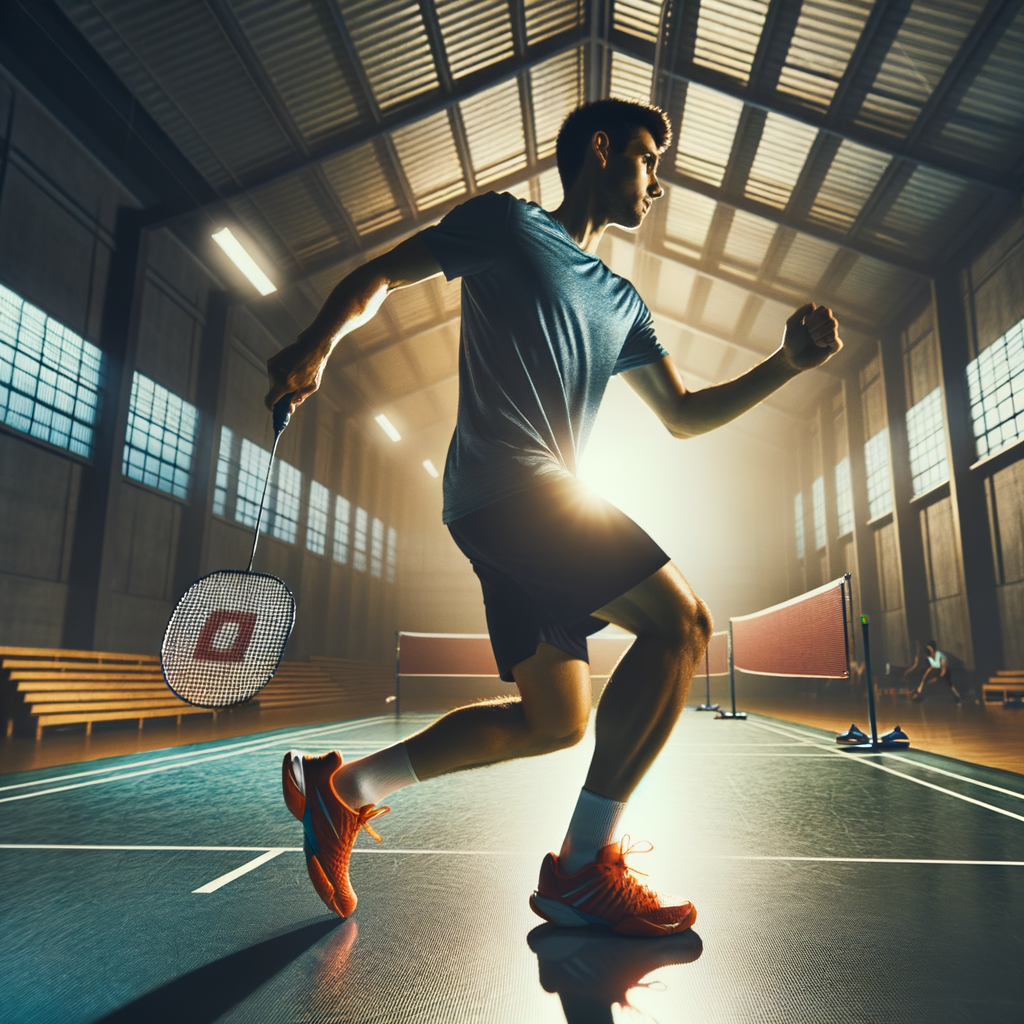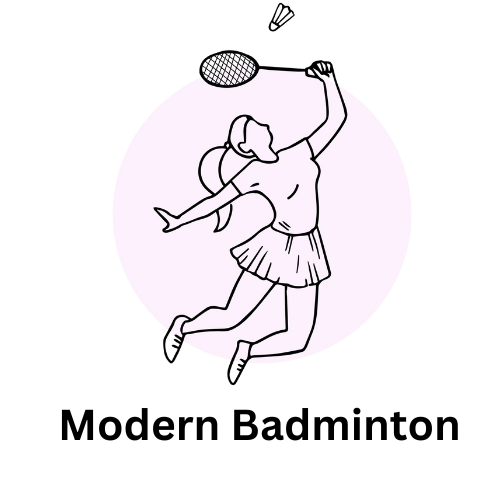
Introduction to Badminton Footwork
- Importance of footwork in badminton:Footwork is very important in badminton. Good footwork helps you move quickly and reach the shuttlecock. It also helps you keep your balance and hit the shuttlecock with power.
Without good footwork, you might miss shots or get tired quickly. Many top players say that footwork is the key to winning matches.
- Basic principles of badminton footwork:There are some basic rules to follow for good footwork. First, always stay on your toes. This helps you move fast. Second, use small steps to adjust your position. Third, keep your knees slightly bent. This helps you stay balanced.
Another important rule is to always return to the center of the court after each shot. This way, you are ready for the next shot. Practicing these principles can make a big difference in your game.
How to Improve Your Badminton Footwork
- Understanding the court and positioning
Knowing the badminton court is key. The court has different areas like the net, service boxes, and back boundary lines. You need to understand where to stand and move during a game. Good positioning helps you reach the shuttlecock faster.
- Importance of agility in badminton
Agility means being quick and flexible. In badminton, you need to change directions fast. This helps you get to the shuttlecock in time. Agility also helps you recover quickly after each shot.
- Badminton footwork drills for beginners
Practicing footwork drills can make you better. Here are some simple drills:
- Shadow badminton: Pretend to hit the shuttlecock without a partner. Move around the court as if you are playing.
- Side-to-side drills: Stand in the middle of the court. Move quickly to the left and right. This helps improve your side movements.
- Front-to-back drills: Move from the front to the back of the court. This helps you get better at reaching shots near the net and the back boundary.
These drills help you get used to moving around the court. Practice them often to see improvement.
Badminton Footwork Techniques
Badminton Court Movement
Good footwork is key to playing badminton well. It helps you move quickly and hit the shuttlecock with precision. Let’s explore the different types of footwork used in various parts of the court.
- Front court footwork:In the front court, you need to be quick and agile. Use small, fast steps to reach the shuttlecock. Bend your knees slightly and stay on the balls of your feet. This helps you move quickly and change direction easily.
Example: When your opponent hits a drop shot, you need to move forward quickly. Use a lunge step to reach the shuttlecock and return it with a net shot.
- Mid court footwork:The mid court is where you often transition between offense and defense. Here, use a combination of side steps and quick shuffles. Keep your body balanced and ready to move in any direction.
Example: If your opponent hits a drive shot, you need to move sideways quickly. Use side steps to position yourself and return the shot with a drive or a push.
- Back court footwork:In the back court, you need strong and powerful movements. Use long strides and jumps to reach the shuttlecock. Make sure to pivot on your feet to change direction smoothly.
Example: When your opponent hits a clear shot, you need to move backward quickly. Use a chasse step or a jump to reach the shuttlecock and return it with a clear or a smash.
| Footwork Type | Key Movements | Example Scenario |
|---|---|---|
| Front court footwork | Small, fast steps; lunge | Reaching a drop shot |
| Mid court footwork | Side steps; shuffles | Returning a drive shot |
| Back court footwork | Long strides; jumps | Returning a clear shot |
Badminton Footwork Patterns
Understanding footwork patterns is crucial for any badminton player. Good footwork helps you reach the shuttlecock quickly and efficiently. Let’s explore three main footwork patterns:
- Linear footwork patterns:Linear footwork involves moving forward and backward in a straight line. This pattern is often used when you need to reach the shuttlecock at the front or back of the court. For example, when your opponent hits a drop shot, you use linear footwork to move quickly to the front court.
- Lateral footwork patterns:Lateral footwork means moving side to side. This is important when you need to cover the width of the court. For instance, if your opponent hits a shot to the far left or right, you use lateral footwork to get there. This pattern helps you maintain balance and stay ready for the next shot.
- Diagonal footwork patterns:Diagonal footwork combines both linear and lateral movements. It is used to move diagonally across the court. This pattern is useful when you need to reach shots that are hit to the corners of the court. For example, if your opponent hits a clear to the back corner, you use diagonal footwork to reach it efficiently.
Here is a table summarizing the key points:
| Footwork Pattern | Description | Example |
|---|---|---|
| Linear | Moving forward and backward | Reaching a drop shot at the front court |
| Lateral | Moving side to side | Covering a shot to the far left or right |
| Diagonal | Combining linear and lateral movements | Reaching a clear to the back corner |
Mastering these footwork patterns will make you a more agile and effective badminton player. Practice them regularly to improve your game.
Badminton Movement Tips
- Maintaining Balance and PostureKeeping your balance is very important in badminton. Stand with your feet shoulder-width apart. Bend your knees slightly. This helps you stay steady and move quickly.
- Effective Use of Non-Racket FootYour non-racket foot helps you move and balance. When you hit the shuttle, step forward with your non-racket foot. This gives you more power and control.
- Importance of Quick RecoveryAfter hitting the shuttle, return to the center of the court quickly. This is called recovery. Quick recovery helps you get ready for the next shot.
Agility in Badminton
Improve Badminton Agility
- Agility drills for badmintonAgility drills help players move quickly and change direction. Here are some drills:
- Shuttle Runs: Run back and forth between two points. This helps with quick direction changes.
- Ladder Drills: Use a ladder on the ground. Step in and out of the squares quickly. This improves foot speed.
- Side-to-Side Drills: Move side to side quickly. This helps with lateral movements.
- Benefits of agility trainingAgility training has many benefits for badminton players:
- Better Movement: Players can move faster and more efficiently on the court.
- Improved Balance: Helps maintain balance during quick movements.
- Enhanced Coordination: Improves hand-eye coordination, which is crucial in badminton.
- Injury Prevention: Strengthens muscles and joints, reducing the risk of injuries.
| Drill | Purpose |
|---|---|
| Shuttle Runs | Improve quick direction changes |
| Ladder Drills | Enhance foot speed |
| Side-to-Side Drills | Boost lateral movements |
Badminton Footwork Exercises
-
Exercise 1: Shadow Badminton
Shadow badminton is a great way to practice your footwork without a shuttle. Imagine you are playing a real game and move around the court. This helps you get used to the movements and improves your speed and agility.
Key Insight: Practice shadow badminton for 15-20 minutes daily to see improvement.
-
Exercise 2: Skipping Rope
Skipping rope is excellent for building stamina and quick feet. It helps you stay light on your feet, which is crucial for badminton. Try to skip for at least 10 minutes a day.
Example: Professional players often skip rope to warm up before matches.
-
Exercise 3: Ladder Drills
Ladder drills are perfect for enhancing your footwork. Place a ladder on the ground and practice different patterns like side steps and quick steps. This will help you move faster and more accurately on the court.
Tip: Use ladder drills 3 times a week to boost your agility.
Badminton Footwork Training
Enhance Badminton Speed
-
- Speed training drills
Speed is crucial in badminton. Here are some drills to help you get faster:
-
-
- Shuttle Runs: Run back and forth between two points quickly.
- Ladder Drills: Use a ladder on the ground to practice fast foot movements.
- Jump Rope: Jumping rope helps improve your foot speed and coordination.
- Benefits of speed training
-
Speed training offers many benefits for badminton players:
-
- Improved Reaction Time: You’ll be able to reach the shuttle faster.
- Better Stamina: Speed drills also help build endurance.
- Enhanced Agility: Quick movements make it easier to change direction.
Conclusion: Mastering Badminton Footwork
-
- Summary of key takeaways
Mastering badminton footwork is essential for success. Good footwork helps you move quickly and efficiently on the court. It allows you to reach the shuttlecock in time and return it with precision. Key techniques include the split step, lunges, and shuffles. Practicing these techniques will improve your game.
-
- Importance of consistent practice
Consistent practice is crucial for mastering footwork. Regular drills and exercises help build muscle memory. This makes your movements more natural and automatic. Remember, even professional players practice their footwork daily. Consistency is the key to becoming a better player.
| Key Technique | Benefit |
|---|---|
| Split Step | Improves readiness and reaction time |
| Lunges | Enhances reach and stability |
| Shuffles | Boosts lateral movement and speed |
In summary, mastering badminton footwork is a journey. It requires dedication and consistent practice. By focusing on key techniques and practicing regularly, you can improve your footwork and become a better player. Remember, good footwork is the foundation of a strong badminton game.
